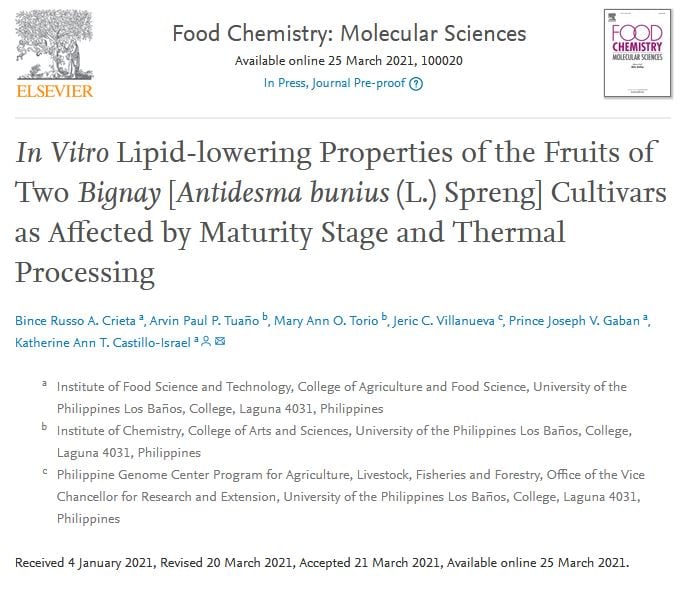Bignay [Antidesma bunius (L). Spreng] fruit contains an array of polyphenols and information on how these bioactive compounds vary with cultivar type, maturity stage, and process treatment are unclear. Also, the effects of these variations on the lipid-lowering potential of this Philippine indigenous berry have not been reported.
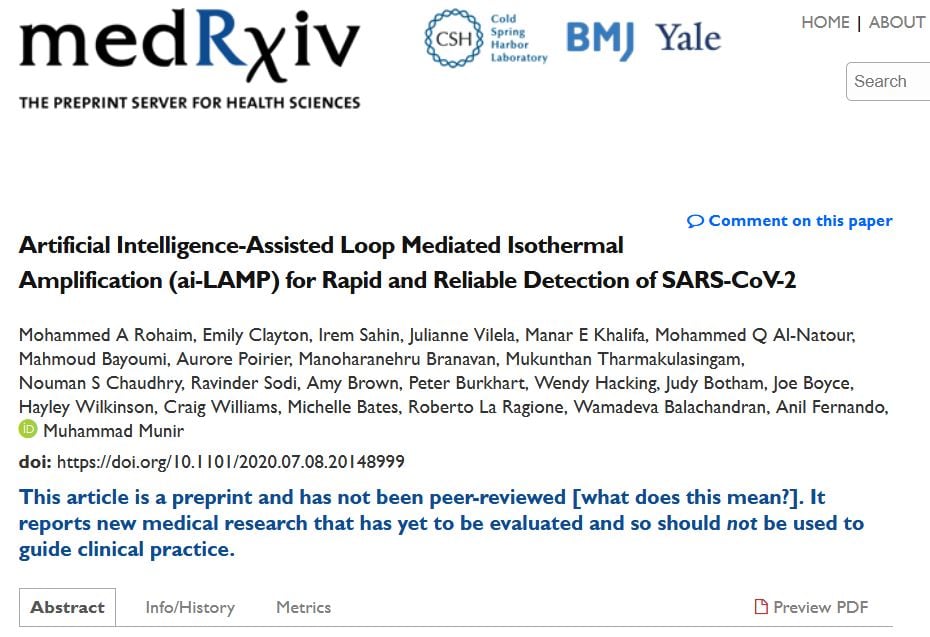
Artificial Intelligence-Assisted Loop Mediated Isothermal Amplification (ai-LAMP) for Rapid and Reliable Detection of SARS-CoV-2
Until vaccines and effective therapeutics become available, the practical way to transit safely out of the current lockdown may include the implementation of an effective testing, tracing and tracking system. However, this requires a reliable and clinically validated diagnostic platform for the sensitive and specific identification of SARS-CoV-2.

DNA Barcoding and Diversity Analysis of 19 Economically Important Philippine Sea Cucumbers (Holothuroidea)
This study established the DNA barcodes of 19 economically important Philippine sea cucumbers belonging to Class Holothuroidea under Phylum Echinodermata using the cytochrome c oxidase I (COI) gene.
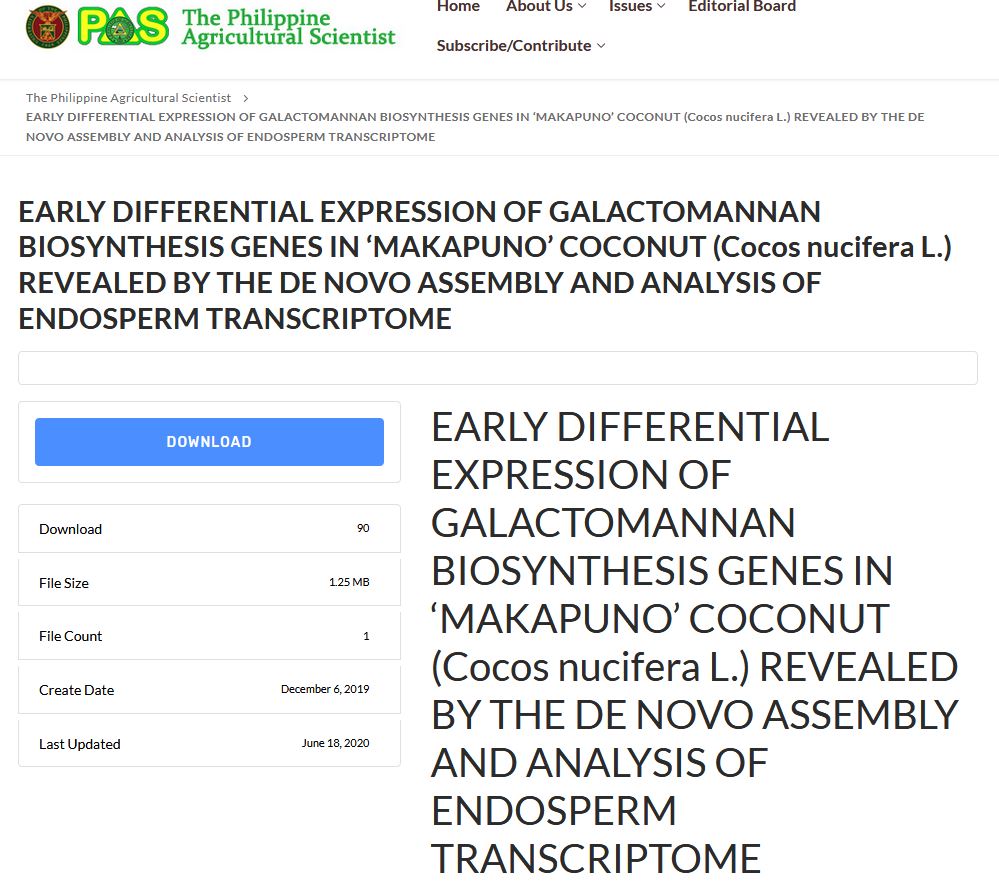
Early Differential Expression of Galactomannan Biosynthesis Genes in ‘Makapuno’ Coconut (Cocos nucifera L.) revealed by the De Novo Assembly and Analysis of Endosperm Transcriptome
Makapuno is a coconut cultivar with a naturally overproliferating solid endosperm almost filling the nut cavity. At 6-7 months after pollination (MAP), makapuno solid endosperm is phenotypically indistinguishable from the normal type Laguna Tall while at 8-9 MAP makapuno starts to soften and thicken in contrast to the hard and compact appearance of the normal. Here, the expression profiles of 6-7 and 8-9 MAP de novo assembled RNA Sequencing (RNA-Seq) transcriptomes of normal and makapuno were analyzed, and corresponding stages were compared to determine the differentially expressed genes (DEGs).

Transcriptome Analysis of ‘Philippine Lono Tall’ Coconut (Cocos nucifera L.) Endosperm Reveals Differential Expression of Genes Involved in Oil Biosynthesis
The ‘Philippine Lono Tall’ (PLNT) is a variant of the more common ‘Philippine Laguna Tall’ (LAGT), which produces fruits with soft endosperm and reported higher fat content. To understand patterns of fatty acid (FA) and oil accumulation in LAGT and PLNT fruits, transcriptomes of 6–7 month-old endosperm samples were analyzed by RNA-Seq. Quantitative PCR was performed to analyze the differential expression of selected genes related to oil biosynthesis. Further, oil samples from the PLNT endosperm were analyzed to determine their FA composition across developmental stages.
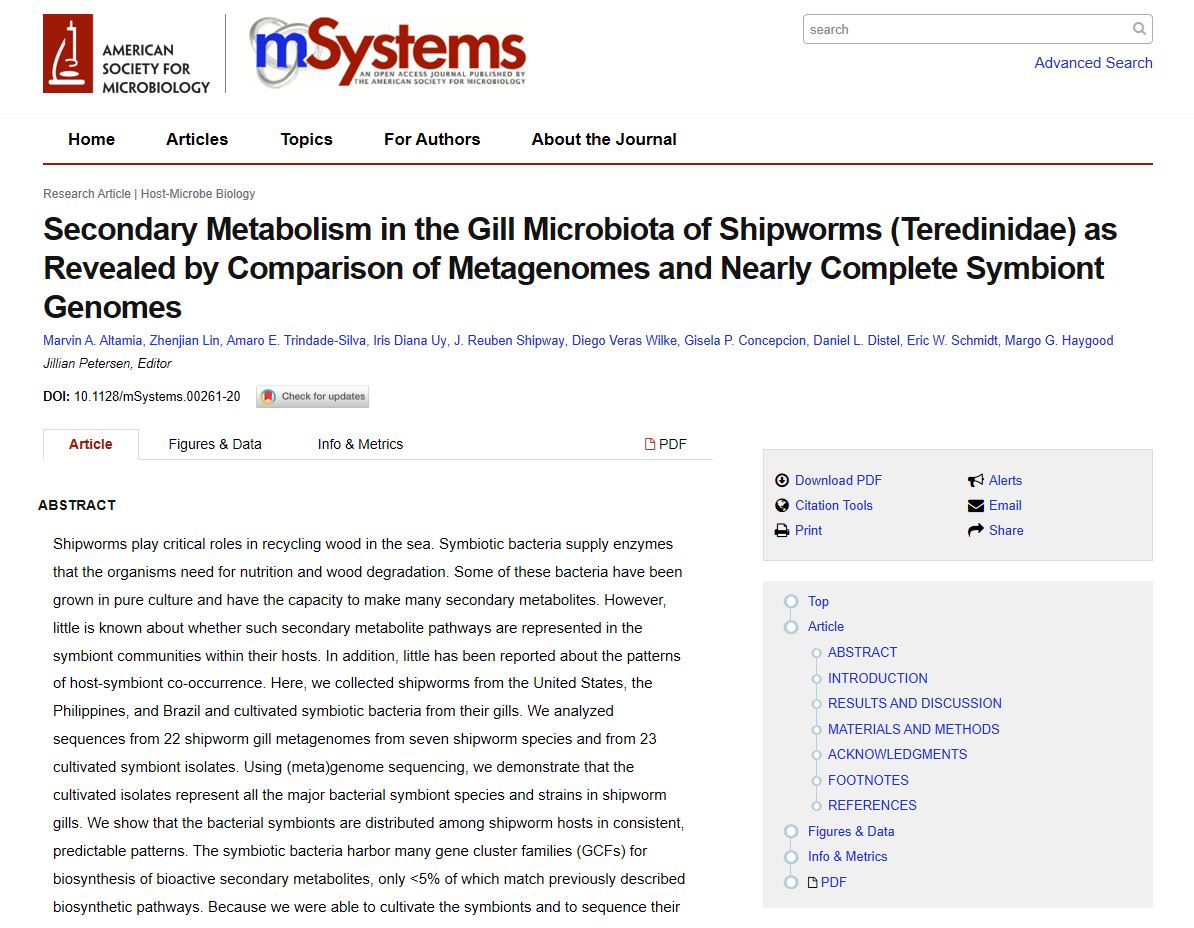
Secondary Metabolism in the Gill Microbiota of Shipworms (Teredinidae) as Revealed by Comparison of Metagenomes and Nearly Complete Symbiont Genomes
Shipworms play critical roles in recycling wood in the sea. Symbiotic bacteria supply enzymes that the organisms need for nutrition and wood degradation. Some of these bacteria have been grown in pure culture and have the capacity to make many secondary metabolites. However, little is known about whether such secondary metabolite pathways are represented in the symbiont communities within their hosts.
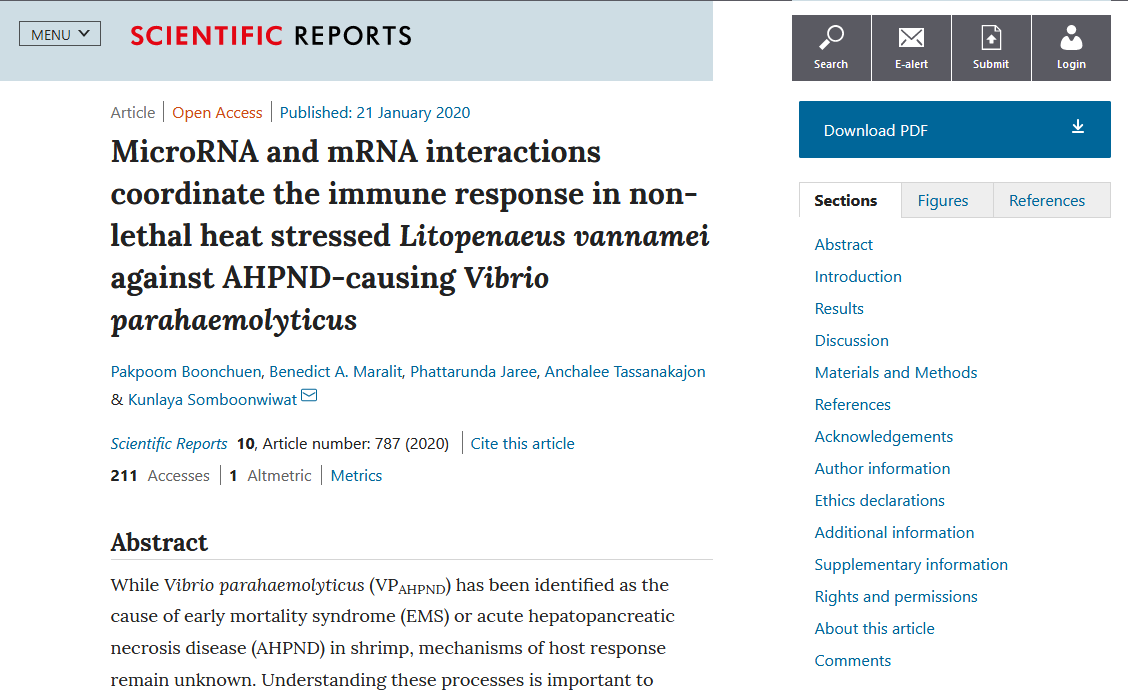
MicroRNA and mRNA interactions coordinate the immune response in non-lethal heat stressed Litopenaeus vannamei against AHPND-causing Vibrio parahaemolyticus
During its first outbreak, the devastating effect of early mortality syndrome (EMS) on the global shrimp industry was primarily caused by the lack of information regarding the disease and its causative agent.
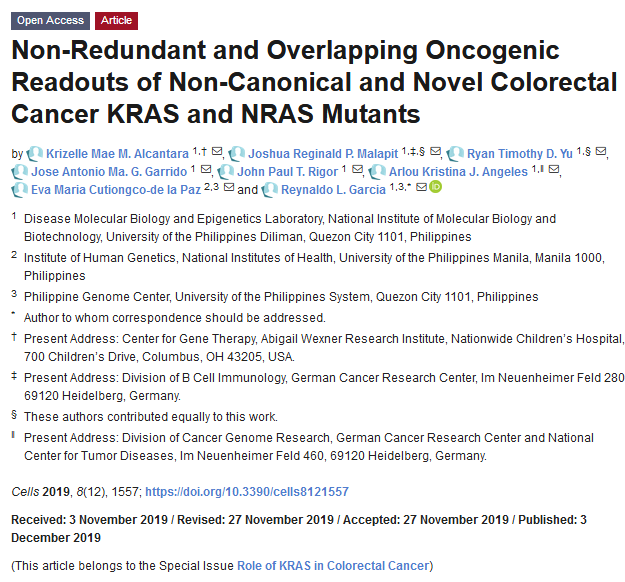
Non-Redundant and Overlapping Oncogenic Readouts of Non-Canonical and Novel Colorectal Cancer KRAS and NRAS Mutants
The efficacy of monoclonal antibodies targeting the epidermal growth factor receptor (EGFR) pathway for treatment of colorectal cancer (CRC) depends on predictive biomarkers that can identify likely responders or non-responders to therapy.

Draft Genome Sequence of Multidrug-Resistant Vibrio parahaemolyticus Strain PH698, Infecting Penaeid Shrimp in the Philippines
The emergence of multidrug-resistant bacterial strains in diverse settings has been reported globally. In the Philippine shrimp aquaculture industry, antibiotics are used for the treatment of bacterial diseases during the production cycle. We report the draft genome of Vibrio parahaemolyticus PH698, a multidrug-resistant strain isolated from a Philippine shrimp farm.
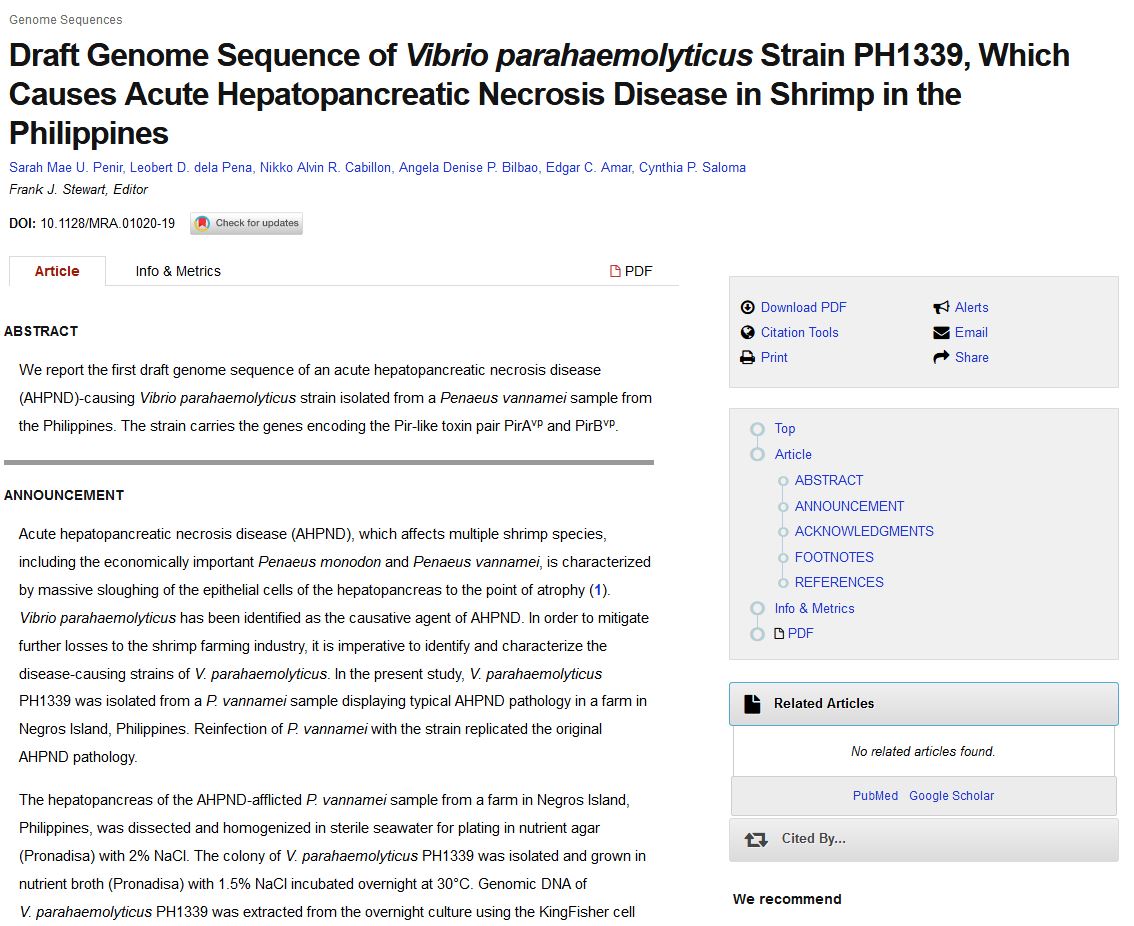
Draft Genome Sequence of Vibrio parahaemolyticus Strain PH1339, Which Causes Acute Hepatopancreatic Necrosis Disease in Shrimp in the Philippines
Acute hepatopancreatic necrosis disease (AHPND), which affects multiple shrimp species, including the economically important Penaeus monodon and Penaeus vannamei, is characterized by massive sloughing of the epithelial cells of the hepatopancreas to the point of atrophy (1).

